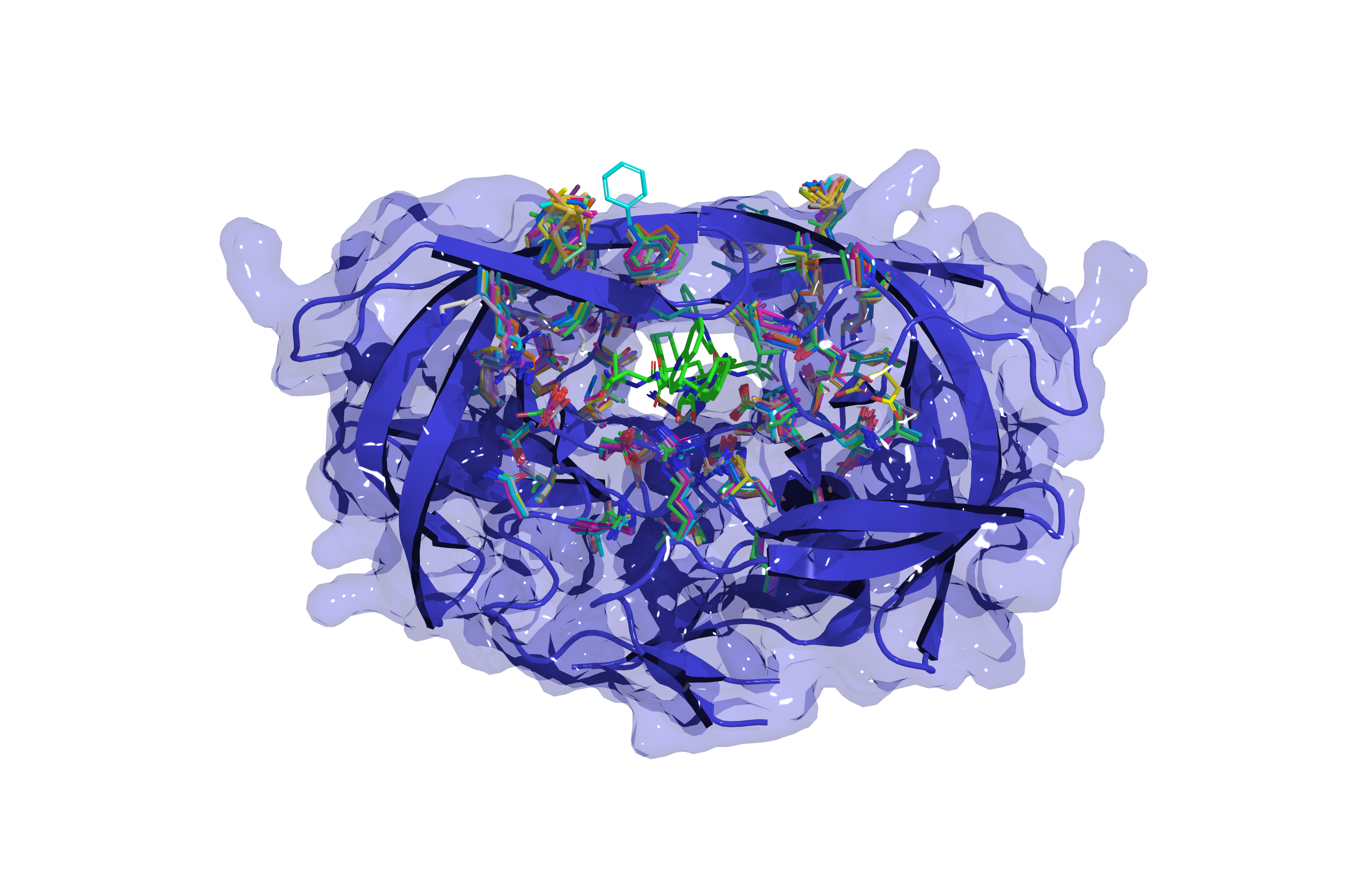Structural Bioinformatics of Protein Interactions
The group has been established in April 2012, lead by Dr. Olga Kalinina, as a part of the Department of Computational Biology & Applied Algorithmics at the Max Planck Institute for Informatics. As the name suggests, we study protein interactions computationally and from a structural perspective. Our research interests include structural mechanisms, by which genetic variations manifest themselves in the phenotype. We are specifically interested in these processes in viral and bacterial pathogens.
Viral pathogens

Of particular interest to us are viruses, because their unique biology and importance for the public health render them ideal models for our studies. The high evolutionary rate of many viruses allows them to evolve measurable phenotypic traits in little time. Additionally, viruses engage in an extensive and highly regulated network of interactions with the host cell. HIV and HCV are in the focus of virus-related research in our group. There are several areas of our special interest:
- The change of free binding energy of ligands upon point mutations in the virus protein
- Evolution of binding interfaces in interactions between viral-viral and viral-host proteins
- Modelling the emergence of resistance towards anti-viral drugs
- Modelling specificity of virus-host interactions
The evolution of viruses of the large scale is also a topic of interest in our group. We are working on detection of abnormal evolutionary patterns in the viral proteome, such as horizontal gene transfer events into viral families, or gene exchange between distantly related viral families. We are also interested in a deeper reconstruction of phylogenies between viral families based on protein structure comparison.
Bacterial pathogens
Pathogenic bacteria can quickly evolve new traits as well, particularly, to become resistant to antibiotics. Development of novel compounds with antibacterial activity is an important goal in pharmaceutical research. Both studying resistance to known antibiotics, and developing new ones requires support from structural bioinformatics. We are interested in studying the mechanisms, by which target proteins interact with known and novel drugs, and the resistance-associated mutations disrupt these interactions. Our projects in this area include:
- Structural analysis and modelling of resistance-associated mutations
- Computational analysis of drug targets, binding sites and inhibition mechanisms based on resistance-associated mutations
Human diseases
Many human diseases, including cancer, are caused by genetic alterations either in the germ line or in somatic cells. A lot of these variations amount to changes in amino acid sequence of the corresponding proteins, which may in turn influence the interactions, in which these proteins engage. These interactions include building protein complexes, interactions in signalling cascades, binding DNA by the transcription factors, interactions with low molecular-weight ligands. In our work, we study how the mutations influence the specificity and strength of these interactions. Some of such projects are:
- Modelling the spatial distribution of disease-associated mutations in protein complexes
- Specificity within eukaryotic signalling cascades
- Resistance to inhibitors in cancer-associated tyrosine kinases
Algorithm development
In our work we use established algorithms in structural bioinformatics, as well as develop our own tools. These tools provide means of analysis on different levels of protein organization, from sequences to assembly of large oligomeric complexes:
- Detection of horizontal gene transfer between viral families
- Identification of interaction interfaces of viral proteins by means of analysis of conservation patterns of amino acid residues on their surface
- Detection of structural motifs in distantly related and non-related isofunctional viral proteins
- Analysis of functional impact of protein-altering genetic variations in bacteria and eukaryotes
- Development of sensitive techniques for assessment of change of the free energy upon mutation in protein sequence
- Combinatorial assembly of large oligomeric complexes assisted by detection of correlated evolution in protein sequences
